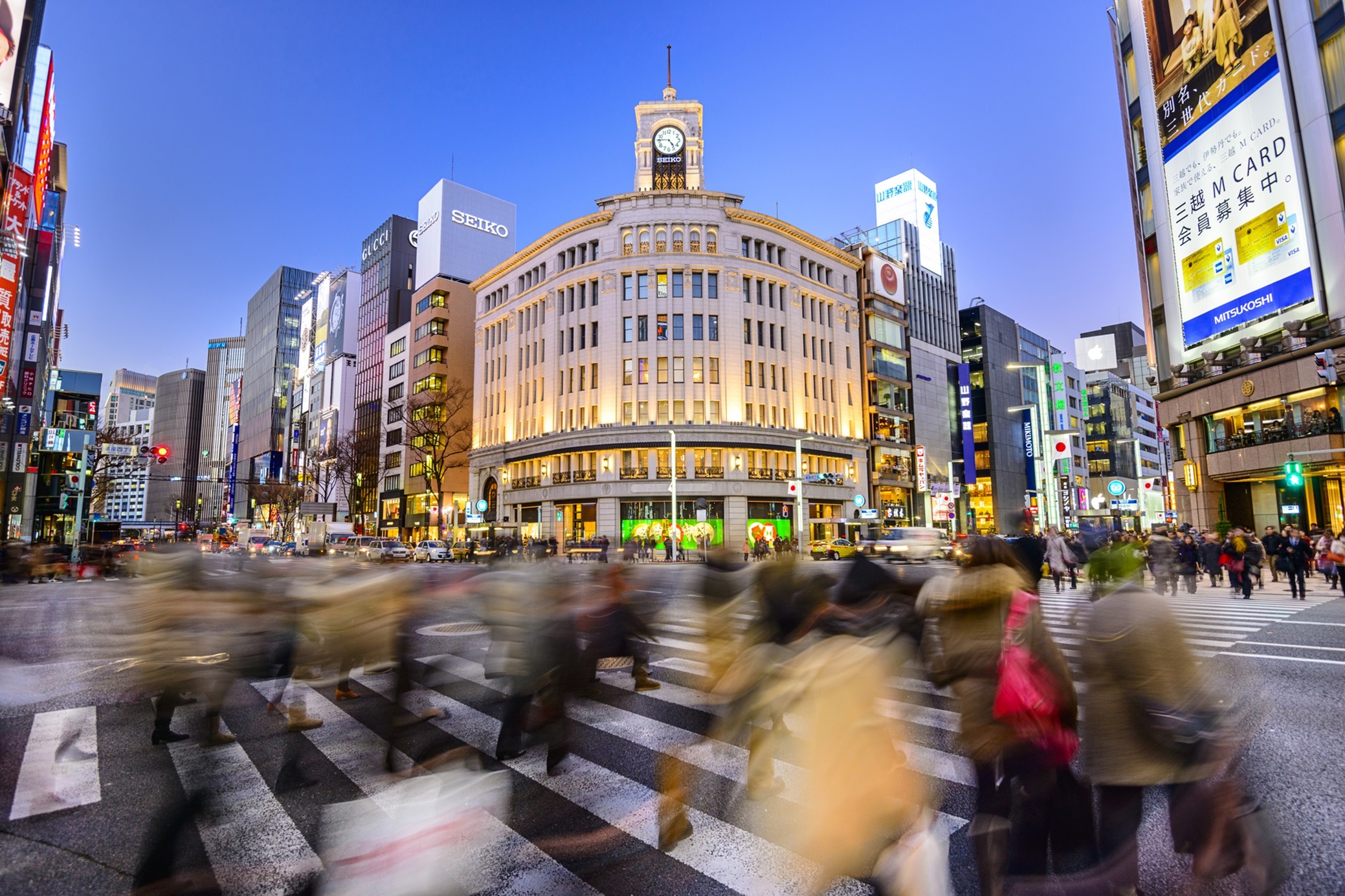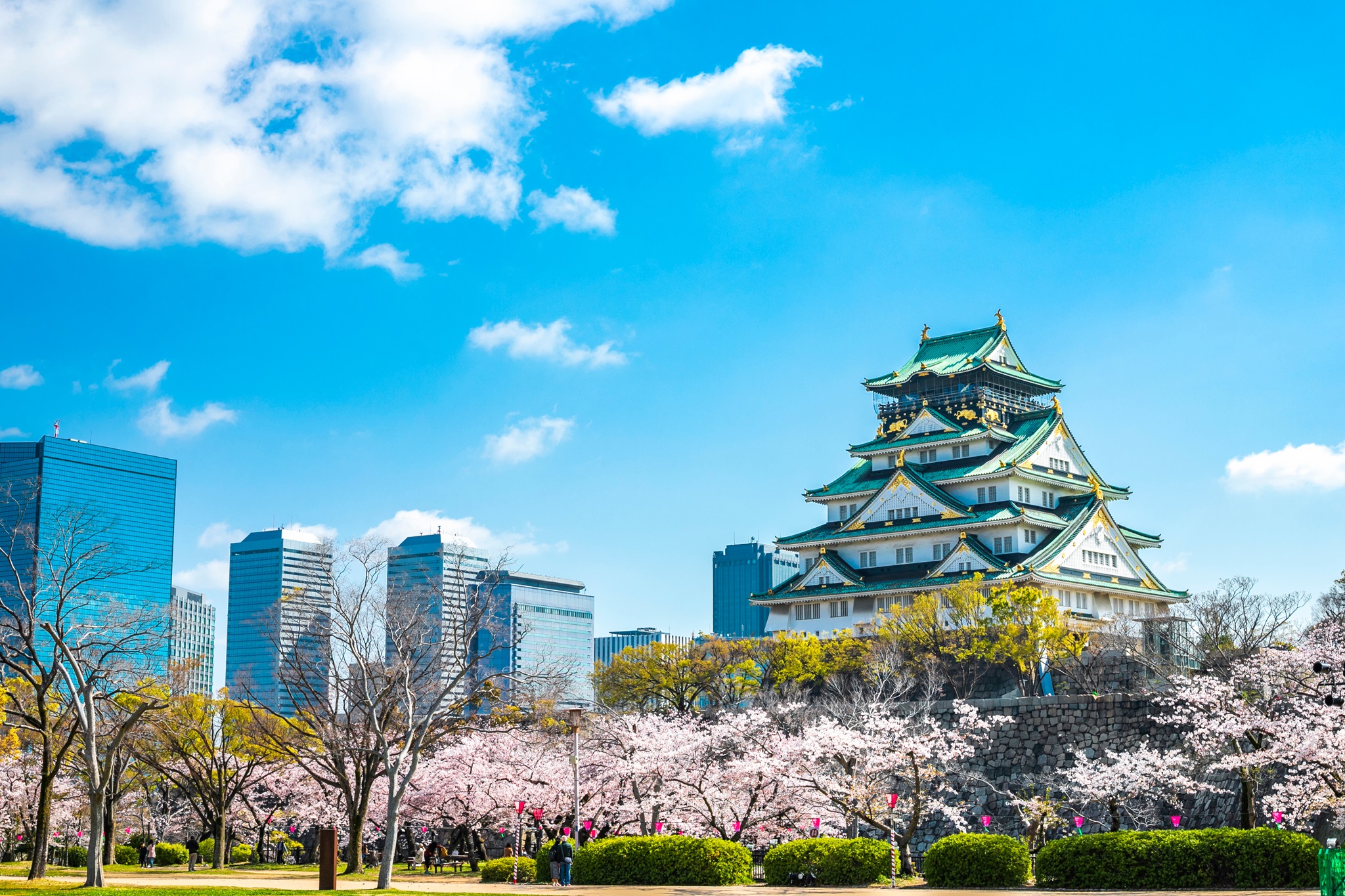A Classic First Visit to Japan
Introduction
Voted “Best Country in the World” for two years in a row by Condé Nast Traveler readers, Japan offers more than an artful juxtaposition of the historic and the modern — it manifests a whole different dimension, where the past and the future meld into a vibrant, pulsating, anachronistic present. It absolutely is a little Blade Runner in the cities and a lot Totoro in the country. On a first visit, you can sample some of the best restaurants in the world, shop in sparkling department stores, and ride on a public transportation system so efficient, they’ll apologize for a delay of a few seconds. Find inspiration in pristine mountains and forests, take part in moments of serenity in ancient temples, and relax deeply in traditional hot springs with a side of modern art.

Read on to explore the major cities, UNESCO sites, and mouthwatering experiences you’ll most likely encounter on a classic introductory itinerary of Japan. There is something for any kind of traveler in a country built to politely coexist while catering to individual interests — from jazz and greaser subcultures to cuteness overload and high fashion. Whatever excites you about a trip to Japan, be prepared to be delighted. When overwhelming attention is paid to every detail, you’ll be left to marvel at everything from meticulously built temples to samurai shows to the beautiful packaging of your pastries.

Tokyo
Tokyo Introduction
The mega city is the largest and most densely populated metropolis in the world. There are 37.4 million inhabitants in a space that’s approximately 13,500 sq km (5,200 sq miles), which is about the same as Los Angeles County but with four times as many people. Formerly known as Edo, it was first settled by the Chichibu clan in the 11th century and became the de facto capital of Japan in 1603 under the Tokugawa shogunate. In 1868, when Emperor Meiji overthrew the shogunate, they renamed it Tokyo and moved the emperor’s residence from Kyoto, making it the official capital. With 23 wards offering different delights, mostly of the shopping and dining variety, you could spend years discovering every nook and cranny. Let’s start at the sedate Emperor’s house and then get as down-market as we can get in whistle-clean Tokyo.
Imperial Palace
The Imperial Palace in the Chiyoda district of Tokyo was built on the site of the old Edo Castle in 1888 during the Meiji Restoration after a fire destroyed the former shogun’s palace. It’s a large, park-like area with fine gardens that you can tour. The current Emperor Naruhito resides in Fukiage Palace, which is open to visitors only on New Year’s Day and the Emperor’s birthday. Otherwise, you can see the beautiful outer gardens and the Nijubashi, a wooden double bridge over a moat, that leads to the inner palace.

Upmarket Shopping & World-Famous Seafood

Close to the Imperial Palace is Ginza, a glamorous part of town known for premium shopping, Michelin-starred restaurants, and art galleries. Ginza means “silver mint” because the area served as a silver coin mint from 1612 to 1800. On the weekends and holidays, roads are closed off to cars, so pedestrians can shop and wander more casually. European fashion houses like Dior, Chani, and Louis Vuitton and Japanese brands like Muji and Uniqlo have their flagship stores here. If you love pens and cards and crafts, there’s Itoya, a 100-year-old stationery store. The Ginza branch of Mitsukoshi, Japan’s oldest department store, is a popular stop and has a two-story depachika (a food hall in a department store basement) with stalls selling bento, saké, cakes, rice crackers, fresh fish and meat, green tea, sweets, and much more. (You can find depachikas in every big department store, and they’re kind of like a Harrods Food Hall – perfect if you want a quick bite of high-class delish to scarf at your hotel or on a rooftop.)
Speaking of food, if you’re in the mood to splurge, there’s Michelin two-star restaurant Tempura Kondo, ground zero for popularizing tempura abroad and serving a thinly-battered array of fresh vegetables and seafood that delivers an airy crunch that’s hard to find outside of Japan. Another two-star is Ginza Kojyu, Chef Toro Okuda’s kaiseki (a traditional Japanese multi-course dinner) restaurant serving ultra-seasonal ingredients. And we have to mention Sukiyabashi Jiro, Jiro’s famous three-starred sushi restaurant offering brusque but considerate service in an underground corridor of an office building. (Reservations are notoriously difficult to get, so plan ahead.)


If you’re tired and want to slow down and take in a bit of culture, Kabukiza is where you can see the classical theatrical drama, kabuki. Or if you’re feeling artsy, the Shiseido Gallery, established in 1919 and arguably Japan’s oldest art gallery, exhibits contemporary art. You can even find dedicated graphic design exhibits at Ginza Graphic Gallery.
Close to Ginza is the world-famous Tsukiji Fish Market, where you should arrive early for fresh seafood. The wholesale fish market and tuna auction moved to Toyosu in 2018, but the Tsukiji Outer Market still offers visitors that bustling vibe, food stalls, and kitchenware. Find sushi, tamagoyaki (Japanese omelette), a set of rice bowls, or a finely crafted kitchen knife.
Trendsetting Districts
If Ginza is not really in your price range, head to fashionable Shibuya and try crossing the enormous intersection to younger, more casual, and trend-setting shops. Shibuya 109 is a temple to young women’s fashion, a 10-story mall loaded with smaller shops selling clothes, accessories, and beauty products. Don’t miss the Mega Don Quijote Shop (locals call it Donki), a 24-hour discount mall with its own theme song and filled floor to ceiling with things you need and things you’ve never imagined needing like watches, electronics, shoes, make-up, anime plushies, snacks, sex toys, regular toys, cosplay outfits, hemp air fresheners, contact lenses, nose-lifting clips, pet supplies, etc.
If you’re North American, it’s like a turbocharged Spencer Gifts. Oh, and if you want to feel nostalgic, go to Tower Records and give some new CDs a spin at a listening station. Afterwards, eat wagyu beef at Shibuya Wagyu Yakiniku Ushihachi Kiwami (right above the Scramble Crossing), get coffee at Fuglen, a mid-century, Norwegian cafe/bar where every antique and piece of furniture can be purchased, or chill out at Kotaro, an izakaya (informal pub) with no menu but finely crafted small plates chosen by the chef to your preferences (reservations are hard to get at the 10-seater).


You can get even more cheap and cheerful in Harajuku, Tokyo’s teenage street fashion capital, that’s one JR Yamanote train stop away from Shibuya. Takeshita Dori is a walking street filled with boutiques, crepe stands, and elaborately dressed youth in goth, punk, rockabilly, or Victorian styles. Right across the train station is Kyushu Jangara Ramen, a tonkotsu (pork bone broth) ramen joint with a perpetual line out the door. Get the “with everything” bowl for all the toppings.
For a completely different vibe, walk 10 minutes from Harajuku station to Meiji Jingu, one of Japan’s most popular shrines dedicated to the deified spirits of Emperor Meiji and Empress Shoken. After passing the torii (a tall gate that marks the approach to a shrine), you’ll walk through a tranquil forest that makes you feel miles away from the city. You can participate in Shinto traditions like cleansing your hands before approaching the main hall, making offerings, buying charms, and writing out your wishes for love, health, or wealth.
Nostalgia & Neon
Just west of Shibuya is a cool neighborhood named Shimokitazawa (called Shimokita by locals), that feels less frenetic and caters to a more bohemian, artsy crowd. There are murals along the walls, vintage clothes and vinyl, handcrafted jewelry, hipster cafes, live music venues, and a theater scene. The area was a farming town in the 1910s before exploding into a residential area in the 20s and 30s. During WWII, when food and products were scarce and highly regulated, the neighborhood became an important black market. In the 1970s, Shimokita came into its full counterculture identity as more young people moved in, and today it preserves a sense of community, DIY commerce, and passion for the arts. Try freshly made soba (buckwheat noodles) at Dashinsoan or if you’re looking for curry (the area hosts an annual curry festival in October), there’s Nijiiro Curry Shokudo, Curry Spice Gelateria Kalpasi, or Sanzou Tokyo. Real Mexican flavors can be found at Kitade Tacos, where the tortillas are made from Hokkaido corn and a vegan option exists.


Head back on an Odakyu train and you can be in Shinjuku in two stops if you’re on the express or ten minutes on the local. Shinjuku is probably the part of Tokyo that most inspired Blade Runner, with the world’s busiest train station pushing 3.5 million people daily to and from the neon-lit, sensory-overloading, sky-scraping neighborhood. Take the Central East exit out of the station to get to seedy little Kabukicho, the red light district with private karaoke booths, hostess clubs, love hotels, bars, and outrageous, kitschy shows like the Samurai Restaurant (run by the same creators of the infamous but currently closed Robot Restaurant)
For a quieter, more intimate experience, head to Golden Gai, a network of tiny alleys with equally tiny and fun bars like horror-themed Deathmatch in Hell, literature-themed The Open Book, or goth-themed Albatross. If you’re looking for something more family-friendly, you can spend 45-50 minutes at Ninja Trick House to try out some weapons and learn about the history of these stealthy warriors. There are a ton of places to eat in depachikas, on top of department stores, in office buildings, and at fancy izakayas, but Shinjuku hosts hundreds of ramen joints, so they wouldn’t be standing if they didn’t deliver the slurp. You can also find small yakitori (grilled chicken skewers) establishments and other BBQ pubs down a narrow alley called Omoide Yokocho, or Memory Lane.
Temples & Theme Parks
To get a little more of old Tokyo, head thirty minutes northeast of Shinjuku to Asakusa, the capital of shitamachi, or the low-lying, riverbank area. Asakusa is a district that’s centered around Senso-ji, the oldest Buddhist temple in Tokyo, originally built in 645 (it was rebuilt after being bombed in 1945) in dedication to Kannon, the bodhisattva of compassion. It is popular with locals and tourists alike and is the most visited religious site in the world with 30 million annual visitors. You’ll first enter by passing under the giant red Kaminarimon (Thunder Gate), originally built in 941 (reconstructed for the last time in 1960). Then you’ll walk up Nakamise-dori, a street leading up to the temple that’s lined with small souvenir and snack shops. It feels like a tourist trap, but it’s worth bearing the crowds for quality traditional gifts like sweets, rice crackers, fans, lanterns, chopsticks, and woodblock prints for folks back home.



If you have extra time in Tokyo, consider visiting the Ghibli Museum to immerse yourself in Hayao Miyazaki’s world and learn about animation. Tokyo Disneyland is great, but the nautical Tokyo DisneySea is uniquely centered around different ports of call and is more popular with adults.
There are also cafes dedicated to letting you spend time with animals spread across the city, whether it’s dogs, cats, capybara, hedgehogs, owls, or mini pigs. You’ve also probably heard about the delicious food at Japanese convenience stores, and it’s an absolute must. Head down to the closest Lawson, Family Mart, or 7-Eleven and get yourself an egg salad sandwich or a tuna rice ball.

Hakone & Mt. Fuji
Hakone & Mt. Fuji Introduction
To find Japan’s natural beauty, you need not travel far. Mt. Fuji, an ever-present figure in the nation’s culture and landscapes, looms large enough to be seen from many vantage points—though its snow-capped peak often plays hide-and-seek behind the clouds. From the soothing hot springs and charming ryokans of Hakone to the breathtaking lakes and trails at the mountain's base, in this region you’ll find adventure, serenity, and tradition that feels quintessentially Japanese.
Unwind in Hakone
About an hour and a half southeast of Tokyo in Kanagawa Prefecture is the charming, onsen (hot spring) resort town of Hakone, perfect for a day trip or an overnight stay on your way to Kyoto. If you’re not heading to Mt. Fuji proper, take in the views of the iconic mountain from picturesque Lake Ashi, where you can sail across on a faux pirate ship. There’s a traditional, thatched roof teahouse called Amazake-chaya along the way to or from the lake, which has been serving fermented rice tea and mochi for 400 years.
For a relaxing, cozy experience, stay at one of the many ryokans (traditional Japanese inns) with communal hot springs (or private baths on your balcony if you’ve got tattoos – check policies), tatami (straw mat) rooms, and kaiseki meals. You could easily spend a couple of hours at the Hakone Open Air Museum which opened in 1969. It has a thousand modern art pieces with many sculptures permanently exhibited outdoors that you come upon as you walk the park, in one with nature. Picasso’s early drawings and ceramic works are inside a two-story exhibition hall.

Take the cable cars on the Hakone Ropeway up to Owakudani, a valley of an active volcano with sulfurous steam percolating up from the mountain. It’s nicknamed “Jigokudani” (Valley of Hell) by locals because it does give off a cooled-down vibe of where Frodo had to throw the precious ring in The Lord of the Rings. Lucky black eggs cooked in the boiling spring waters are sold to visitors as longevity boosters, and the valley is another spot from which to gaze at Mt. Fuji. Certain trails are closed due to volatility, but you can make a reservation for a guided tour through the safe parts.
Fuji-san

Mt. Fuji is Japan’s highest mountain at 3,776 meters (12,389 feet) and is an active volcano that last erupted in 1707. Its symmetry and snow-capped grandness have inspired artists and poets for centuries. Many Buddhist monks, Shinto priests, and hikers pilgrimage to the sacred mountain that is a UNESCO World Heritage Site.
Lake Kawaguchiko is 1.5 hours north of Hakone by bus. It’s the most easily accessible of the Fuji Five Lakes and is at the base of Mt. Fuji. Seeing the mountain depends on the weather no matter where you’re viewing it from, but the lake has the benefit of proximity, when compared to Hakone. On the north shore of Kawaguchiko is Oishi Park with a fabulous road full of colorful flowers along each side that can frame a gorgeous shot of “Fuji-san.” Oshino Hakkai, located between Kawaguchiko and Yamanakako, is a village with eight ponds fed by snowmelt from Mt. Fuji that has filtered down layers of lava. Locals revere the exceptionally clear spring water, and you can even sample some of it. Lake Yamanakako is the largest of the Fuji Five Lakes and has the best wide-angle views of the mountain. You can take a sightseeing tour on a boat that’s shaped like a swan and feed some real swans along the way.

Kyoto
Kyoto Introduction
Japan’s capital from 794 to 1868, Kyoto is home to 1.5 million inhabitants and is the country’s cultural heart. Having escaped destruction during WWII, Kyoto offers well-preserved traditional architecture, crafts, temples, gardens, tea ceremonies, and geisha districts. It’s all about slowing down and appreciating gorgeously fine things as opposed to Tokyo’s frenetic energy.
Temples, Gates & Castles
In southern Kyoto, Fushimi Inari Shrine is where you can hike the iconic trail through thousands of orange torii (gates). Each gate was a donation or offering from a person or business wishing to express their devotion to Inari, the Shinto god of rice, tea, sake, fertility, agriculture, and prosperity. The whole trail takes two or three hours, so head back down when you’ve had enough. A good stopping point is the Yotsutsuji intersection about halfway up where you can get a bird’s eye view of Kyoto. You may notice many fox statues across the grounds; they serve as messengers of Inari.
Thirty-five minutes north of Fushimi Inari is the UNESCO-listed Kinkaku-ji (Golden Pavilion), a Zen Buddhist temple covered in gold leaf. It looks dramatically bold against the pond and foliage. The present building was rebuilt in 1955 after fire destruction. The original building was a retirement villa for Shogun Ashikaga Yoshimitsu, who wanted it to become a temple after his death in 1408. Visitors can’t enter the pavilion, but you can have matcha and sweets at the teahouse.


Another one of the seventeen Historic Monuments of Ancient Kyoto that have been designated a UNESCO World Heritage Site, Nijo Castle was the Kyoto residence of the Tokugawa shoguns. Construction began in 1603 and was completed 23 years later. During the Meiji Restoration, the palace was donated to the city and opened to the public. It’s considered one of the best examples of castle architecture from the feudal period. Some interesting features include two concentric circles of defensive stone walls and moats, as well as squeaky floors in the hallways that were an alarm system against intruders. The grounds have 400 late-blooming cherry trees, so the pink blossoms usually last from late March through April. (Kyoto is packed to the gills during cherry blossom season.)
Pathways to the Past
Ninenzaka and Sannenzaka are two ancient, sloping, cobblestone alleys on the way to Kiyomizu-dera with beautifully preserved, historic buildings. It’s what Nakamise-dori in Asakusa wants to be when it grows up. You can find street food like mochi, ice cream, and pickles, plus trinkets, katana (swords), and atmospheric tea houses. Kyoto is the birthplace for matcha (Japanese green tea), as a Buddhist monk went to study in China and brought back seeds and the method for preparing powdered green tea in 1191. The Uji area is considered to have the ideal climate and soil for growing tea, and the Kyoto cultivators use age-old techniques. Make sure to take some gold-standard green tea home with you.


Kiyomizu-dera itself is a celebrated Buddhist temple founded in 780, known for its large wooden veranda, or stage, that juts out from the main hall over the hillside. The temple is named after the pure waters of the Otowa Waterfall. Of note: not a single nail was used in the entire structure. Of side note: there was a tradition during the Edo period where people thought that if they jumped off the terrace into the waterfall and survived, their wish would be granted. Survival rate was about 85% before the practice was prohibited.
If you want to catch a glimpse of Kyoto’s fabled geisha, it’s recommended that you visit the Gion district at dusk to see them heading home from work. If you do run into geiko (geisha in the Kyoto dialect) or maiko (apprentice geisha), be respectful and do not act like paparazzi. If it fits in your budget, you can go to an ochaya (tea house) and pay top dollar to be entertained by geiko with songs, traditional dances, and drinking games. Gion is also known for the interesting machiya (town house) which were merchant houses that had a tiny facade in front and then extended 20 meters (65.6 feet) back from the street like a railroad apartment because they used to tax properties by frontage space. Five minutes from Gion is Pontocho, a narrow alley packed with restaurants in wooden buildings that overlook the Kamogawa (Duck River). There are izakayas, kaiseki restaurants, bars, sushi, and yakitori.

Nature Break

On top of Arashiyama (Storm Mountain) on the western outskirts of Kyoto, there’s Iwatayama Monkey Park, home to 120 semi-wild, free-roaming Japanese macaques. You can get up close and feed them, but don’t touch and don’t stare into their eyes. There’s also the lush and picturesque bamboo groves you can reach directly from the main street of Arashiyama for a truly organic moment of Zen.

Nara
Nara Introduction
An hour from either Kyoto or Osaka, Nara was the country’s first, albeit short-lived, permanent capital when it was established in 710 and stands second behind Kyoto on the cultural treasures scale. It’s a small city of 277 square kilometers (107 square miles) with a population of just over 367,000.
Temple Hop to the Deer
Nara’s eight major historic temples, shrines, palaces, and a primeval forest are collectively a UNESCO World Heritage Site. Todai-ji (Great Eastern Temple) is a landmark and the country’s most famous and significant temple, as the head of all other provincial Buddhist temples. Todai-ji became overly powerful from its establishment in 752, so the capital was moved away from Nara in 784 to escape its influence. The temple houses a famous 15 meter (49 foot) giant, bronze Buddha that sits imposingly grand and serene. Kasuga Taisha is the most important Shinto shrine in the city with dramatic sloping roofs hanging over its white buildings with bright red columns. Three thousand bronze lanterns donated by worshippers are lit only twice a year for festivals in early February and mid-August. Originally built for the Fujiwara family, the shrine is a tribute to five main Shinto deities. Walk ten minutes to visit the shika (deer) at Nara Park, who are semi-wild like the monkeys of Arashiyama. If you stare too hard into a deer’s eyes while feeding them, they’ll probably just run away, but little children are warned not to hold the deer crackers because they can get a little aggressive about their snacks.


Osaka
Osaka Introduction
Osaka, the “kitchen of Japan” and the heart of the western Kansai region, is not historically romantic like Kyoto and is more laid back, exuberant, gritty, and outgoing than Tokyo. The Osaka dialect has a lovely casual drawl compared to standard Japanese. The city is the third most populous in the country and is considered to be one of the first places settled in the 5th century BCE. Today, it’s one of the most multicultural and cosmopolitan cities in Japan, an economic hub, and foodie paradise.
Eat ‘Til You Drop
Osaka Castle was where Toyotomi Hideyoshi intended to centralize a unified Japan, but Tokugawa troops terminated his line in 1615 after many battles over the castle. The castle is a pristine gray and white structure supported by sheer walls of cut rock piled without any mortar and surrounded by giant moats. The park around the castle is a popular spot for picnics and blossom watching.


But the main attraction of Osaka is probably centered around Shinsaibashi, a shopping street in the brightly lit Dotonbori district. Shinsaibashi merchants have been feeding and entertaining customers for 400 years via restaurants and shops for every budget. The district sits beside a canal and the Dotonbori Bridge makes for a great photo op against the neon signs. Make sure to try Osaka specialties okonomiyaki—a savory pancake made of cabbage, seafood, meat, and sauce—or takoyaki, little ball-shaped dough filled with minced octopus. Kuromon Ichiba is a popular arcade market for fresh produce and seafood where you can find more street food, including the comfort stew called oden, which never looks pretty but soothes with meat and radishes marinating in a light fish broth. KITTE Osaka opened in July 2024 by Osaka Station and features 50 restaurants and cafes. For a classy Michelin-starred prix fixe course, get a reservation at Noguchi Taro.
Find quirky, youthful trends at America Mura (America Village!) for street fashion or Tachibana-dori (Orange Street) for antiques, furniture, and good coffee. If you have more time, catch an Orix Buffaloes baseball game at Osaka Dome or go hop around with Mario and Luigi at Super Nintendo World.
Wherever you go in Japan, remember to breathe between all the fun you’ll be having. Keep your eye on this space for articles about more Japanese destinations for your second, third, and fourth trips!


Plan Your Trip













